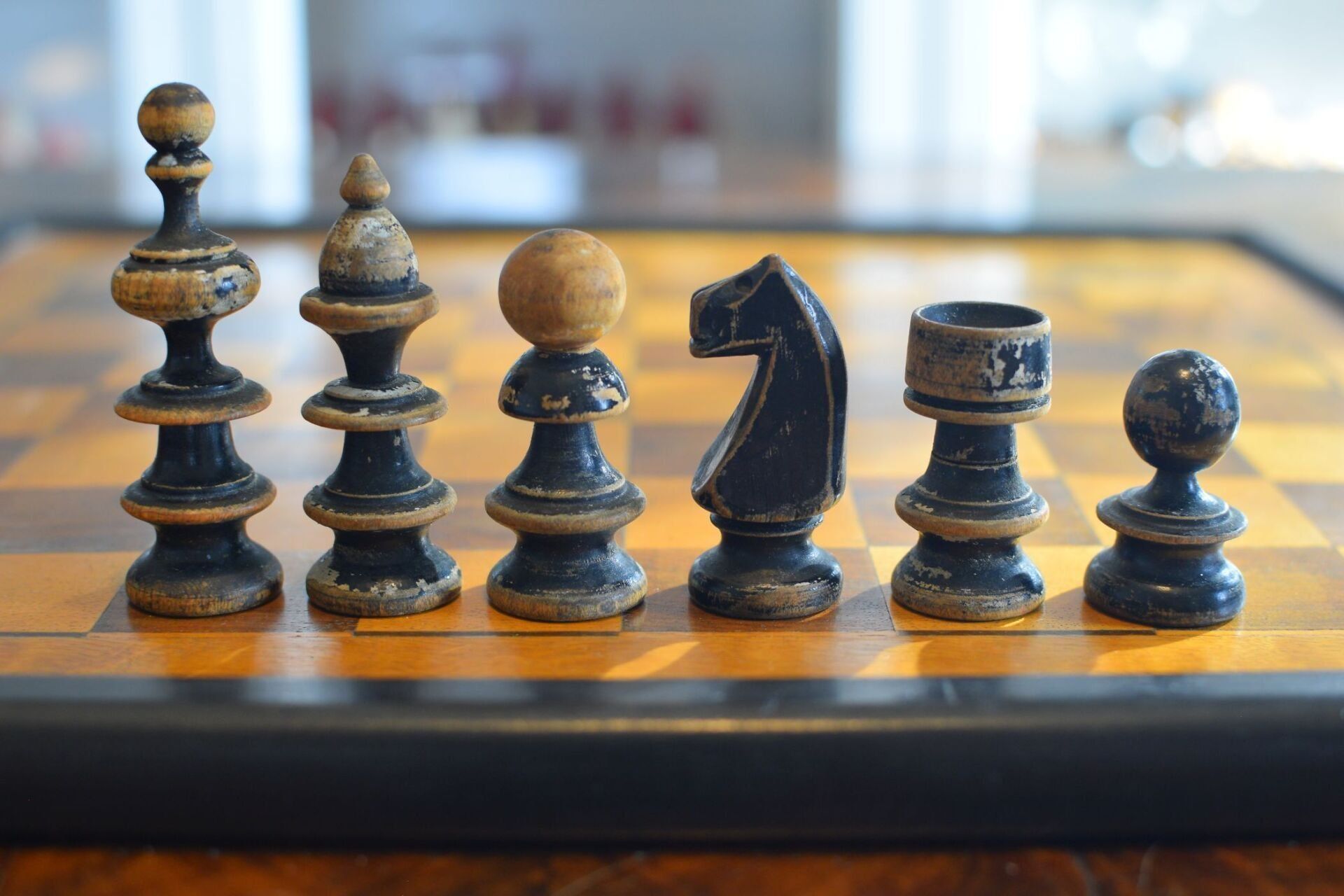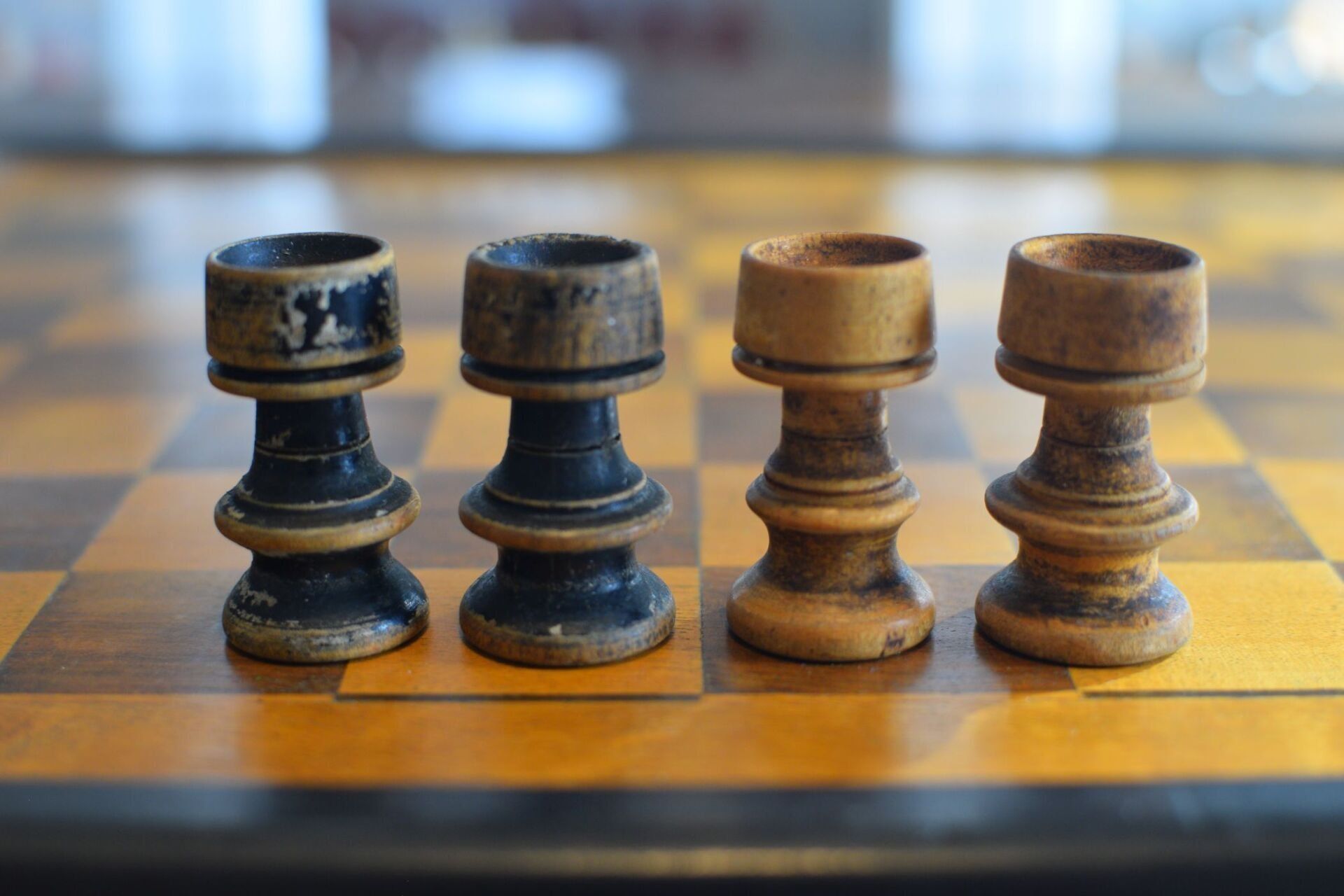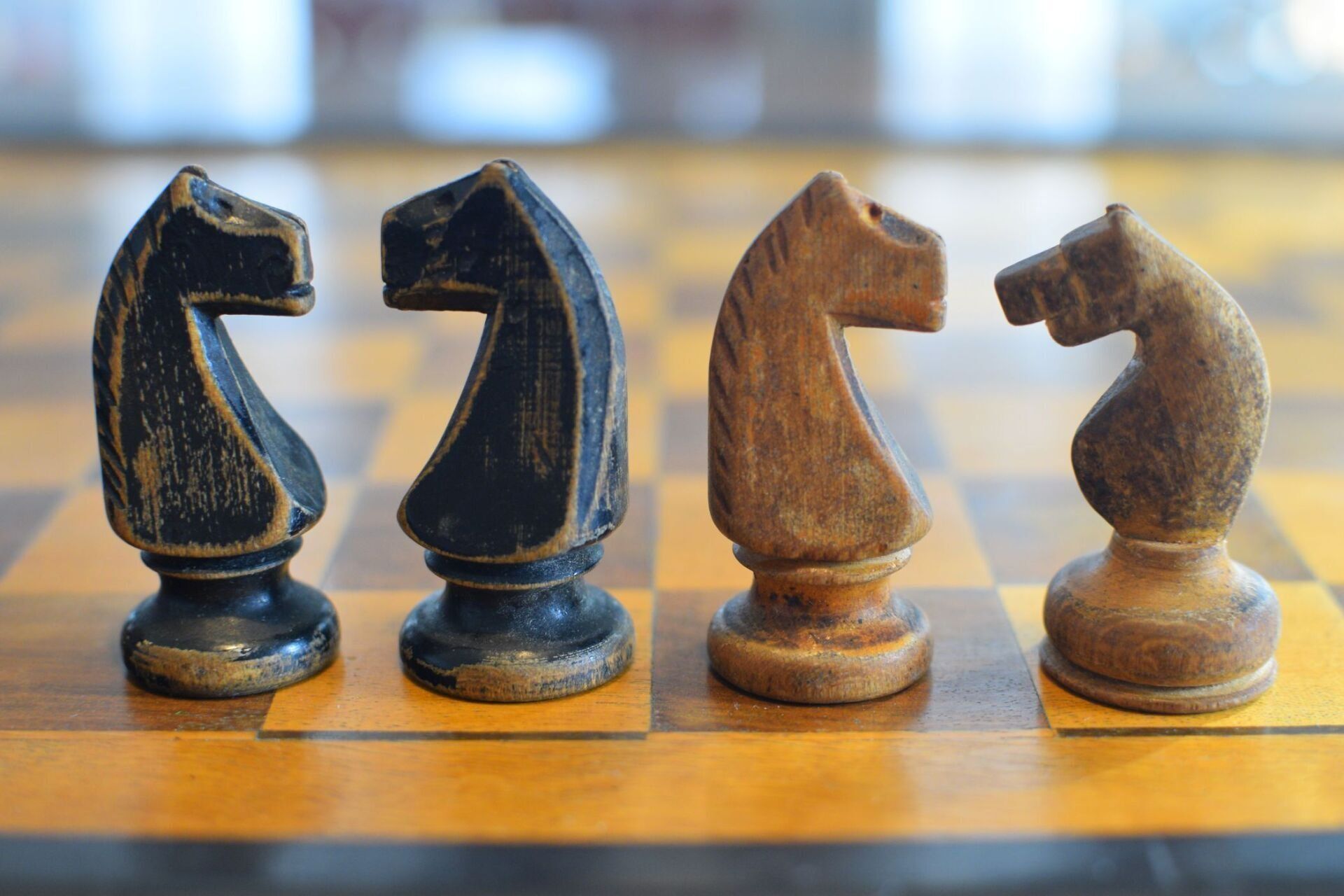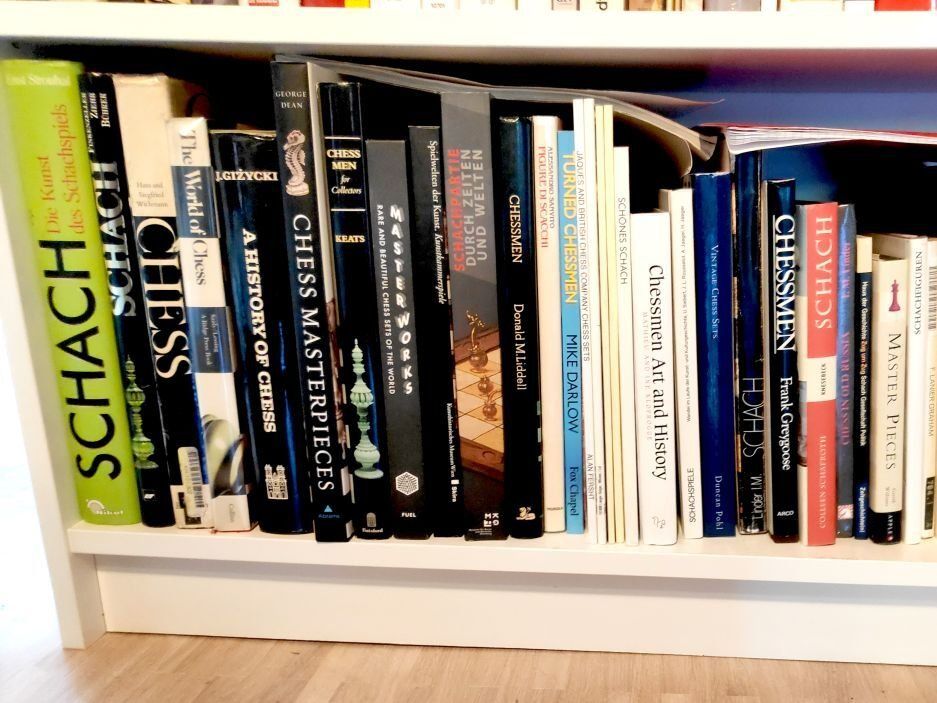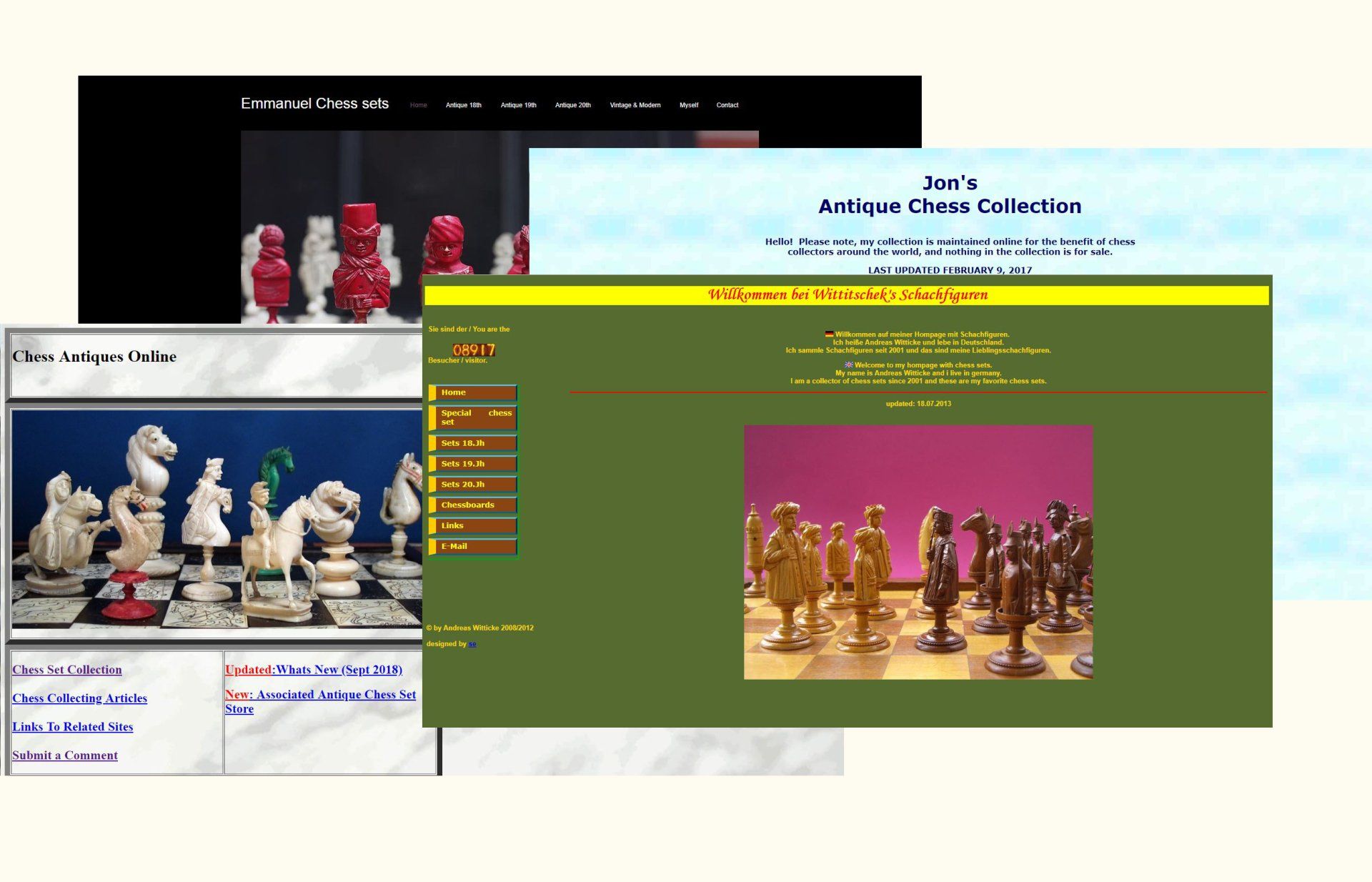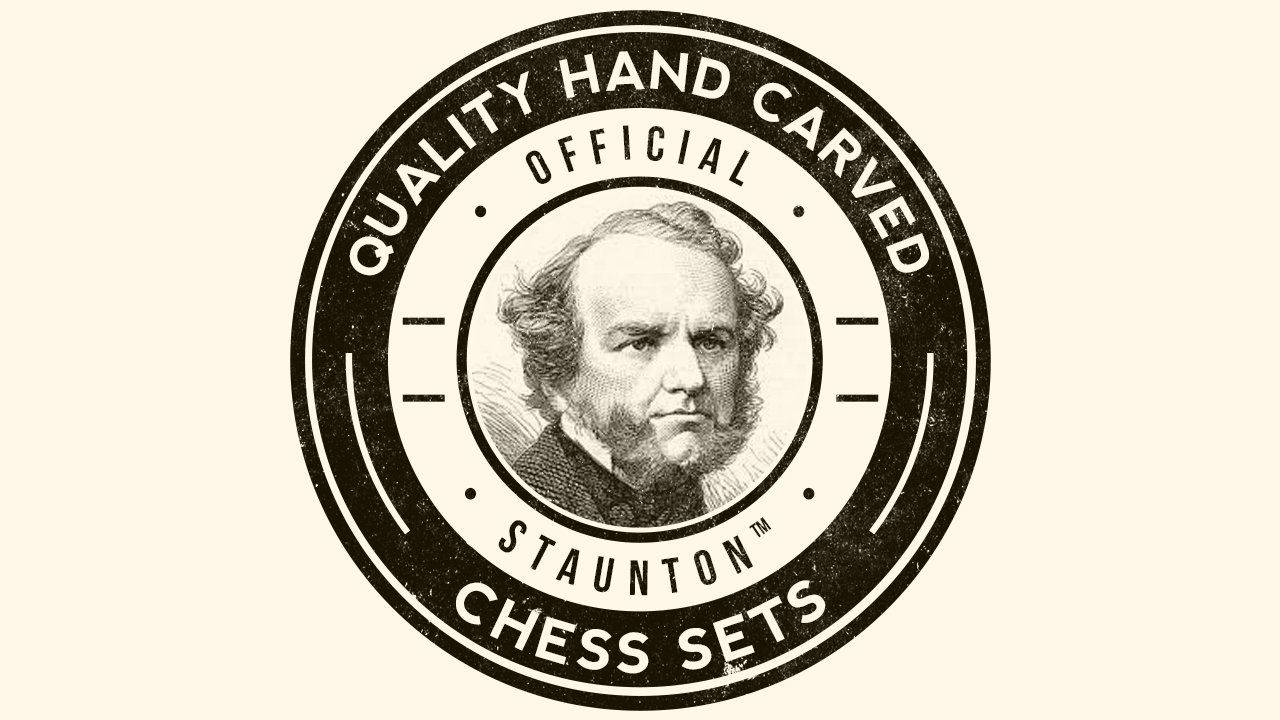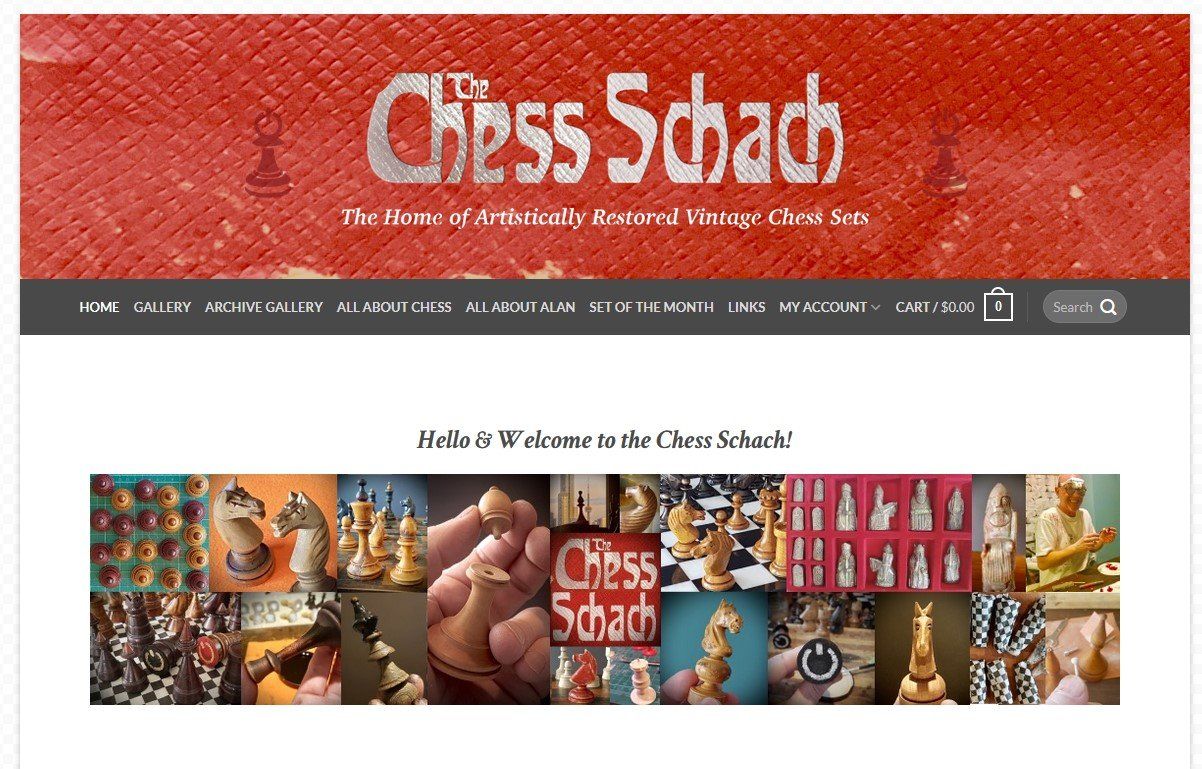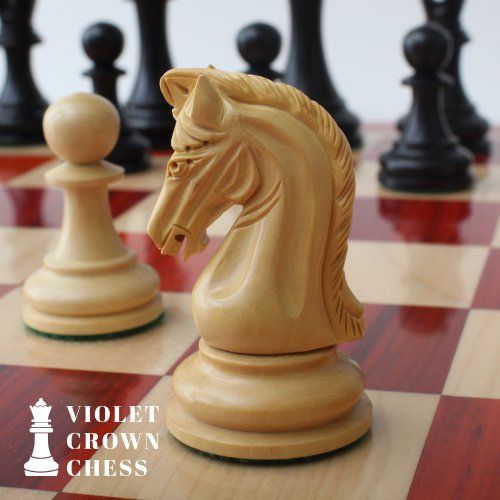Romanian "Coffee House" Chess Set, ca. 1920-1940
Until WWI, some parts of today's Romania - namely the region known as Transylvania - belonged to the Austro-Hungarian Empire ruled by the Habsburg dynasty. It can be assumed that through this connection the Austrian coffee house culture and the common chess sets of the so called Vienna Coffee House style also found their way to the southern Kingdom of Romania, where this set was used in the early years of the 20th century. The set is made of turned wood, one side natural, the other coated in black lacquer. It shows some design features common with the aforementioned Vienna sets, in particular the queens' crowns, which are shaped like hats, the bishops with ball shaped heads in opposite colour or the sturdy rooks. What is interesting in particular is the unusual shape of the king, the crown of which on the upper side narrows into an elongated finial topped with a small ball, almost as if a small pawn sits on top of the kings crown. The set shows some signs of intensive use. Some of the pieces seem to have been replaced, but this does not detract from the overall impression.

